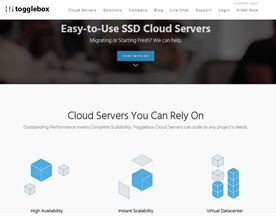Are you struggling with how to schedule your employees or resources effectively? A smart scheduling system might be the solution you’ve been looking for. These computer programs use artificial intelligence and machine learning to plan how to use resources in the most efficient way possible. This can help you save time and money and increase the productivity of your business. This blog post will discuss the benefits of using a smart scheduling system, including cost savings, increased output, and improved flexibility. If you want to make scheduling easier and more effective, keep reading!
What is Smart Scheduling?
Smart scheduling is a way to use software to plan how resources, like people or machines, should be used in order to be most efficient. In just a few clicks, these programs use artificial intelligence and machine learning to analyze data and decide when and how to use the resources. The goal is to focus time and save money by making sure that the resources are being used in the most effective way possible. Smart scheduling systems can also be flexible and adjust to changing conditions to make sure that the schedule is still working well.
What are the Benefits of Smart Scheduling?
One of the main benefits of smart scheduling is cost savings. By optimizing the allocation of resources, a smart scheduling system can help reduce the need for overtime, minimize idle time, and lower the overall cost of labor. This can be especially useful for businesses that rely on a large, flexible workforce, such as those in the service or retail industries.
Smart scheduling can also lead to increased output and productivity. By analyzing data on past performance, resource availability, and other factors, a smart scheduling system can create schedules that maximize the use of resources and minimize bottlenecks or inefficiencies. This can help a business increase its output and meet demand more effectively.
Another benefit of smart scheduling is improved flexibility. Traditional scheduling methods can be inflexible and slow to respond to changing conditions, such as unexpected absences or increased demand. A smart scheduling system, on the other hand, can quickly adapt to changing conditions and adjust the schedule in real-time to ensure that resources are being used effectively. This can help a business stay agile and respond to changing market conditions more quickly.
Key Benefits of Smart Scheduling:
Cost savings through optimized resource allocation and reduced need for overtime
Increased output and productivity through schedules that maximize resource use and minimize bottlenecks
Improved flexibility and ability to respond to changing conditions in real-time
Streamlined scheduling process with reduced need for manual intervention
Potential for improved customer satisfaction through more efficient service delivery
Greater insight into resource utilization and performance through data analysis and reporting capabilities of smart scheduling systems
Stay focused through more efficient use of time and resources
Reduced administration time through automated scheduling tasks and fewer errors
Downsides to Using Smart Scheduling?
There are a few potential downsides to using smart scheduling systems to manage resources. One issue is that these systems can be expensive to implement, especially for small businesses that may not have the budget for advanced technology. Additionally, some smart scheduling systems may require a steep learning curve for unfamiliar users, which can be a barrier to adoption.
Another potential downside is that smart scheduling systems can be inflexible when it comes to dealing with unexpected events or changes in demand. While these systems can adapt to some extent, they may not be able to handle extreme changes or unexpected disruptions as well as a human scheduler could.
Finally, there are concerns about the potential for smart scheduling systems to be biased or to perpetuate existing inequalities. For example, if a smart scheduling system is trained on data that reflects past biases, it may create schedules that perpetuate those biases or discriminate against certain groups of workers. It is important for businesses to be aware of these potential downsides and take steps to mitigate them.
Main Downsides to Using Smart Scheduling:
High implementation cost, especially for small businesses
Steep learning curve for users who are not familiar with the software
Inflexibility in dealing with unexpected events or changes in demand
Potential for bias or perpetuation of inequalities if trained on biased data

Key Features of a Smart Scheduling System
Artificial intelligence and machine learning algorithms for optimized scheduling
A smart scheduling system uses advanced algorithms to analyze data on past performance, resource availability, and other factors to create optimized schedules that minimize costs, maximize output, and reduce the need for manual intervention.
Real-time scheduling and resource allocation
Some smart scheduling systems are designed to operate in real-time, which means that they can adjust the schedule in response to changing conditions or new information as it becomes available. This can be especially useful for businesses that need to be able to respond quickly to changes in demand or other external factors.
Data analysis and reporting capabilities
A smart scheduling system can collect and analyze data on various aspects of the scheduling process, such as resource utilization, performance, and costs. This can help businesses gain insights into their scheduling practices and identify areas for improvement.
Automated scheduling tasks and notifications
A smart scheduling system can automate a range of tasks, such as creating schedules, sending reminders, and tracking time and attendance. This can reduce the need for manual intervention and improve the efficiency of the scheduling process.
Time and attendance tracking
A smart scheduling system can track the time and attendance of employees or other resources, including start and end times, breaks, and overtime. This can help businesses manage labor costs and compliance with labor laws and regulations.
Online booking or self-scheduling
Some smart scheduling systems offer features that allow employees or customers to schedule appointments or events directly through the system. This can be especially useful for businesses that need to manage a large volume of appointments or have a decentralized scheduling process.
Communication and collaboration tools
A smart scheduling system may offer tools for communication and collaboration among team members, such as messaging, file sharing, and task management. This can help businesses coordinate and manage their scheduling processes more effectively.
Calendar integration
A smart scheduling system may integrate with other calendar tools, such as Google Calendar, to allow users to view and manage schedules across multiple platforms.
Mobile access and compatibility
Many smart scheduling systems offer mobile apps or responsive web design, which allows users to access and manage schedules from their smartphones or other mobile devices. This can be especially useful for businesses with a mobile workforce or decentralized scheduling process.
Which types of business can benefit from Smart Scheduling?
There are many types of businesses that can benefit from using a smart scheduling system to optimize the allocation of their resources. Here are a few examples:
Retail stores: Smart scheduling can help retail stores optimize their staffing levels and reduce labor costs by ensuring that the right number of employees are scheduled at the right times based on customer traffic patterns and sales data.
Healthcare facilities: Smart scheduling can help healthcare facilities optimize their staffing levels and reduce labor costs by ensuring that the right number of nurses and other medical staff are scheduled at the right times based on patient demand and other factors.
Service businesses: Smart scheduling can help service businesses, such as cleaning companies or landscaping firms, optimize their staffing levels and reduce labor costs by ensuring that the right number of employees are scheduled at the right times based on customer demand and other factors.
Manufacturing companies: Smart scheduling can help manufacturing companies optimize their production schedules and reduce costs by ensuring that the right mix of machines and employees are available at the right times based on demand and other factors.
Contact centers: Smart scheduling can help contact centers optimize their staffing levels and reduce labor costs by ensuring that the right number of customer service representatives are scheduled at the right times based on call volume and other factors.
Hospitality businesses: Smart scheduling can help hospitality businesses, such as hotels and restaurants, optimize their staffing levels and reduce labor costs by ensuring that the right number of employees are scheduled at the right times based on guest demand and other factors. In addition, smart scheduling can help these businesses improve customer service and satisfaction by ensuring enough employees are always available to meet guests’ needs.
Smart Scheduling Tool Examples
There are hundreds of smart scheduling tools in the market; you can find the best of them listed on serchen.com. Here are 3 examples to get you started:
Deputy (https://www.deputy.com/) – Deputy is a cloud-based smart scheduling platform that uses artificial intelligence and machine learning to optimize the allocation of resources and automate scheduling tasks. It offers features such as real-time scheduling, time and attendance tracking, and performance analysis.
Shiftboard (https://www.shiftboard.com/) – Shiftboard is a smart scheduling platform designed for businesses with complex scheduling needs, such as those in the healthcare, retail, or hospitality industries. It offers features such as advanced scheduling algorithms, real-time shift updates, and employee communication tools.
WhenToWork (https://www.whentowork.com/) – WhenToWork is a web-based smart scheduling platform that offers features such as real-time schedule updates, time and attendance tracking, and automated shift reminders. It is designed for businesses of all sizes and industries.
Find more smart scheduling tools here
![Smart Scheduling Frequently Asked Questions [FAQ]](https://blog.serchen.com/wp-content/uploads/2023/01/a061c5d6-0340-4d09-ad91-409e87623f40.png)
Smart Scheduling Frequently Asked Questions [FAQ]
Can I use google calendar for smart scheduling? – Google Calendar is a popular calendar and scheduling tool that can be used for a variety of purposes, including smart scheduling. While Google Calendar does not have built-in artificial intelligence or machine learning capabilities, it does offer a range of features that can be used to optimize the scheduling process.
How does smart scheduling work? Smart scheduling systems analyze data on past performance, resource availability, and other factors to create optimized schedules that minimize costs, maximize output, and reduce the need for manual intervention. Some systems can also adapt to changing conditions and adjust the schedule in real-time to ensure that resources are being used effectively.
Can smart scheduling create the perfect schedule? It is not possible for any scheduling system, including a smart scheduling system, to create the perfect schedule that works for every business in every situation. Scheduling is a complex process that involves a number of variables, such as resource availability, demand, constraints, and preferences, and it is often difficult to find the optimal solution
Can smart scheduling manage employee shifts? Yes, many smart scheduling systems are designed specifically to manage employee shifts, including the assignment of tasks and responsibilities, scheduling of breaks and overtime, and tracking of time and attendance.
Can smart scheduling software manage new appointments? Yes, many smart scheduling systems are designed to handle new appointments and other changes to the schedule in real-time. These systems can use artificial intelligence and machine learning to analyze data on past performance, resource availability, and other factors to determine the best course of action when a new appointment is added or an existing appointment is modified.
Can smart scheduling be used to manage team meetings? Yes, many smart scheduling systems can be used to schedule team meetings and other group events.
Is Smart Scheduling the Future?
Smart scheduling will likely continue to play an important role in the future as businesses seek to optimize their use of resources and improve efficiency. With the increasing adoption of artificial intelligence and machine learning technologies, it is expected that smart scheduling systems will become more sophisticated and able to handle a wider range of scheduling scenarios.
However, it is important to note that smart scheduling is not a one-size-fits-all solution and may not be appropriate for every business or industry. It is up to each business to evaluate their own needs and determine whether a smart scheduling system is the right fit for their organization.















